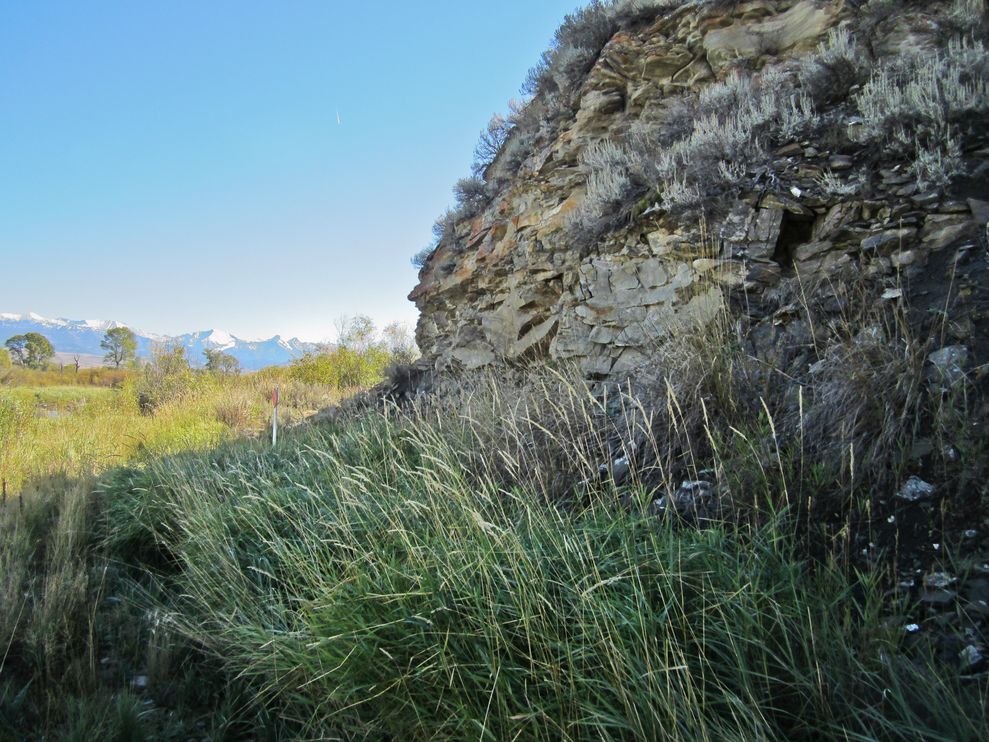DNA harvested from the remains of an infant buried 13,000 years ago confirms that the earliest widespread culture in North America was descended from humans who crossed over to the New World from Asia, scientists say.
The research, detailed in this week's issue of the journal Nature, also suggests that many contemporary Native Americans are direct descendants of the so-called Clovis people, whose distinctive stone tools have been found scattered across North America and Mexico.
The origins and genetic legacy of the people who made Clovis tools have been topics of debate among scientists. While most archaeologists think that the Clovis people were descended from Asians, an alternative theory suggests that the Clovis ancestors emigrated from southwestern Europe during the Last Glacial Maximum more than 15,000 years ago.
The new findings strongly refute that idea, known as the Solutrean hypothesis, said study co-author Michael Waters, director of the Center for the Study of the First Americans at Texas A&M University. "This shows very clearly that the ancestry of the very first Americans can be traced back to Asia," Waters said.
David Anderson, an anthropologist at the University of Tennessee Knoxville, agreed. "There's been a standard model for a long time that modern Native Americans are descended from populations coming from East Asia a few thousand years before Clovis, and that's what this finding reinforces," said Anderson, who was not involved in the study.
Anthropologist Dennis Jenkins of the University of Oregon said the new study was a "really important and really well done piece of research" that opens the door for new kinds of genetic comparisons among ancient Native American remains.
"The importance of this cannot be overemphasized," said Jenkins, who also did not participate in the research.
"People have often asked me what's the relationship of the Paisley Caves"—a site in Oregon where human feces and artifacts up to 13,200 years old have been found—"to Clovis, and I've always said that would be really nice to know, but there hasn't been any Clovis DNA until now," he said.
Oldest Burial in North America
The skeleton of the Clovis child—which experts determined belonged to a young boy about one to one-and-a-half years old—was discovered in 1968 in the Anzick burial site in western Montana. Dozens of ochre-covered stone tools found at the site were consistent with Clovis technology, and radiocarbon dating revealed that the skeleton was approximately 12,600 years old.
The Anzick skeleton "is the oldest burial in North America, and the only known human burial associated with the Clovis culture," Waters said.

PHOTOGRAPH BY MIKE WATERS
The earliest known North American burial was found here in western Montana.
Using bone shavings collected from the skull, the scientists painstakingly reconstructed the full genome of the young Clovis child. "It was actually quite a big challenge," said study leader Eske Willerslev, an evolutionary biologist at the University of Copenhagen in Denmark who led the sequencing effort. "Only 1 to 2 percent of the collected DNA was human," Willerslev said. "The rest of it came from bacteria that invaded the skeleton after death."
Comparison studies of the ancient DNA showed that it was similar to the genomes of ancient people living in Siberia and the ancestors of East Asians. The team also discovered a deep genetic affinity between the boy's genetic material and those of 52 Native American populations living in South America and Canada.
"The Anzick remains share a common ancestry with almost every modern Native American group that we looked at," Waters said.
This is an incredible result, Willerslev said, because it suggests that the relatives of the Anzick child were the direct ancestors of most Native American groups living today. This would be possible, he added, if the population of humans living in the New World about 13,000 years ago was very small and every member was closely related to the others.
The scientists say they strongly suspect, but cannot yet prove, that Native Americans in the United States are also closely related to the Clovis people. Native American groups in the U.S. have been reluctant to share their DNA, or the DNA of their ancestors, with scientists.
"Unfortunately, we don't have much genetic material for native people living in the United States," Waters said. "If you look at the genetic map [of humans around the world], the U.S. is a big [blank] spot."
Jenkins of the University of Oregon said he hopes the new study will lead to further collaborations between scientists and U.S. Native American groups.
"That trust has got to be developed, and that's where Willerslev's group really excelled," Jenkins said. "We'll be better anthropologists and scientists if we view these remains more as the remains of people rather than just artifacts."
Follow Ker Than on Twitter.